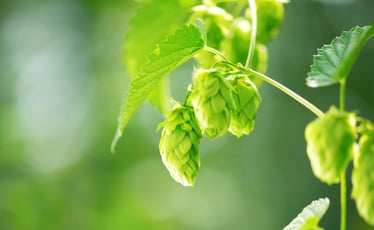 Testing moisture in hops during harvest is a must for every hopyard. There are many reasons why hop growers need to carefully check moisture in their hops, including:
Testing moisture in hops during harvest is a must for every hopyard. There are many reasons why hop growers need to carefully check moisture in their hops, including:
Getting the Timing of the Harvest Right
When it comes to hops harvesting, timing is everything. If you harvest them too soon, you could inadvertently reduce the overall yield of your hopyard. Worse yet, you could accidentally impact your next year’s yield as well.
However, if you wait too late to harvest hops, they could oxidize too quickly in storage because of the loss of vital volatile aroma compounds. This impacts their storability and can reduce quality, thereby making them less desirable to breweries.
As noted in a research article on Hops Harvest Moisture Determination from the University of Vermont, “in the major hop growing regions, harvest is generally targeted when the cones reach approximately 23% dry matter.” However, it is noted that some species of hops, like Willamette, have a lower dry matter target of 20%.
By harvesting when they’re at their ideal harvest moisture content, you can maximize your hops’ quality and make your harvest more desirable.
To Optimize Shipping Moisture Content
Before shipping out hops to a brewery or other customer, they need to be properly dried. If there’s too much moisture remaining, they may suffer from rot (aka microbial degradation). If there’s too little moisture, the hops may crumble and lose quality from oxidation.
Considering how narrow the optimal shipment moisture range is (8 -12%), it’s important to be able to quickly and accurately measure your hops’ moisture content.
Why Use a Moisture Meter to Test Your Hops?
Typical testing using a dehydrator takes hours to do—leading many to use it as an overnight test. The process basically goes:
- Gather a few hundred samples of hops cones.
- Weigh the samples and stick them in the dehydrator (set to 140°F).
- Wait for several hours, check the weight again.
- Repeat Step 3 until the weight stops changing.
- Divide the dry weight by the wet weight to get the moisture content percentage (MC%). So, if you had 100 grams of hops, and they weighed 20 grams after drying, you’d know your hops were at 80% MC.
The problem is that during this time, the rest of the hops are continuing to lose moisture, and may fall under the minimum desired MC% depending on the conditions in the field or your storage.
Moisture meters, on the other hand, can provide a measurement of moisture in hops almost instantaneously. Better yet, the test is non-destructive—you don’t have to dry hundreds of hops samples to 0% MC to check their moisture.
This allows you to check different spots in your hopyard to verify the moisture content of your hops throughout—allowing you to focus on harvesting only the plants that are ready for harvest and leaving plants that are too wet for later.
By doing so, you can maximize the quality and desirability of your hops while minimizing wasted product.
Need a reliable hops moisture meter? Check out the F-2000/H today!

Comments